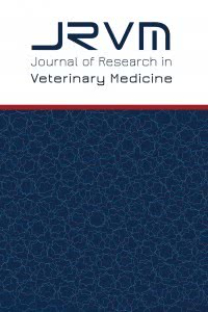BAYAN ELBİSELİK DOKUMA KUMAŞ YAPISININ EĞİLME VE DÖKÜMLÜLÜK ÖZELLİKLERI ÜZERİNE ETKİSİ
Bayan elbisesi, eğilme rijitliği, dökümlülük
Influence of Women’s Dress Woven Fabric Structure on Bending and Drapability Properties
Women’s dress, bending rigidity, drapability,
___
- ASTM D 1388-64. (2002). Standard Test Methods for Stiffness of Fabrics.Annual Book of ASTM Standard.
- Cheng K.P.S., How Y.L. and Yick K.L. (1996). The Application of Fabric Objective Measurement in Shirt Manufacture. International of Clothing Science and Technology, 8(4), 44-64, doi: 10.1108/09556229610124008
- Chung J. (1999). The Effect of Assembly Methods of a Garment on Fabric Drape. PhD Thesis, Institute of Textiles and Clothing. The Hong Kong Polytechnic University.
- Gurarda A. (2009) “The Effects of Seam Parameters on the Stiffness of Woven Fabrics. Journal of Textile & Clothing, 19(3), 242-247.
- Hu J. (2008). Fabric Testing, The Textile Institute, England.
- Hu J., Chung S., Lo M.T. (1997). Effect of Seams on Fabric Drape. Int. Journal of Clothing Science and Technology, 9(3), 220-227, doi: 10.1108/09556229710168351
- Hui P.L.C., Chan K.C.C., Yeung K.W. and Ng F.S.F. (2007). Application of Artifical Neural Networks to the Prediction of Sewing Performance of Fabrics. Int. Journal of Clothing Science and Technology, 19(5), 291-318, doi: 10.1108/09556220710819500
- Hunter L.,Fan J. and Chau D.(2009). Fabric and Garment Drape. Engineering Apparel Fabrics and Garments, Fan J., Hunter L, The Textile Instıtute, doi: 10.1533/9781845696443.102
- ISO 9073-9. (2008). Textiles-Test Methods for Nonwovens-Part 9: Determination of Drapability Including Drape Coefficient.
- Kenkare N., Plumlee-May T. (2005). Fabric Drape Measurement: A Modified Method Using Digital Image Processing. Journal of Textile and Apparel Technology and Management, 4(3), 1-8.
- Omeroglu S.,Karaca E. And Becerir B. (2010). Comparison of Bending, Drapability and Crease Recovery Behaviours of Woven Fabrics Produced from Polyester Fibers Having Different Cross-Sectional Shapes. Textile Research Journal, 80(12), 1180-1190, doi: 10.1177/0040517509355351
- Sharma K.R., Behera B.K., Roedel H. and Schenk A. (2004). Fabric Low-Stress Mechanical Properties and Drapability. Indian Journal of Fibre&Textile Research, 29,57-61.
- Seram N. and Rupasinghe W.(2013). The Influence of Bending Rigidity on Drape Coefficient of Selected Light Weight Woven Fabrics With Seams. International Journal of General Engineering and Technology, 2(1), 25-32.
- Sinclair R. (2015). Textiles and Fashion Materials, Design and Technology. The Textile Institue, England.
- Sun M.N. (2008). A New Tester and Method For Measuring Fabric Stiffness and Drape. Textile Research Journal, 78(9),761-770, doi: 10.1177/0040517507084284
- TS 1409, Turkish Standard. (1973). Stiffness Determination of Woven Textiles.
- ISSN: 2148-4147
- Yayın Aralığı: 3
- Başlangıç: 2002
- Yayıncı: BURSA ULUDAĞ ÜNİVERSİTESİ > MÜHENDİSLİK FAKÜLTESİ
ASSESSMENT OF WATER AND WASTEWATER POTENTIAL OF BURSA CITY
ARZU TEKSOY, BERRAK EROL NALBUR, SEVAL KUTLU AKAL SOLMAZ
A COMPARISON OF ATMOSPHERIC CORRECTION METHODS ON HYPERION IMAGERY IN FOREST AREAS
Müfit ÇETİN, Nebiye MUSAOĞLU, Osman Hilmi KOÇAL
ÇOK FAZLI SİSTEMLERDE HÜCRE AYRIŞTIRILMASI
HAŞIL SÖKME İŞLEMİNE ALTERNATİF BİR METOT; OZON UYGULAMASI
GÜNEŞ IŞIĞINA DAYALI YÖNTEMLERLE SULARDA MİKROORGANİZMA İNAKTİVASYONU: DERLEME
EKRANLAMA VERİMLİLİĞİ KARAKTERİSTİĞİ BAZ ALINARAK MADDE SENTEZLENMESİ İÇİN ANALİTİK BİR YAKLAŞIM
Cihan DÖĞÜŞGEN ERBAŞ, Sedef KENT
EFFECT OF LANGUAGE MISMATCH ON TURKISH SPEAKER VERIFICATION
TENCEL VE PAMUK KARIŞIMLI İPLİKLERİN PERFORMANS ÖZELLİKLERİNİN İNCELENMESİ
Tuğçe Begüm BİLİR, SİBEL ŞARDAĞ
ATIK AKTİF ÇAMUR DEZENTEGRASYONU: MEKANİK, TERMAL VE KİMYASAL YÖNTEMLER
Canan ÇIRAKOĞLU, EFSUN DİNDAR, F. Olcay TOPAÇ ŞAĞBAN
EV TİPİ BİR FIRININ DÜŞME TESTİNİN SONLU ELEMANLAR YÖNTEMİ İLE MODELLENMESİ
